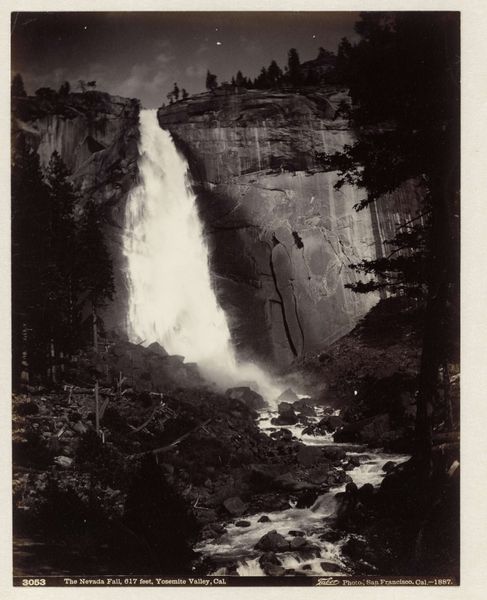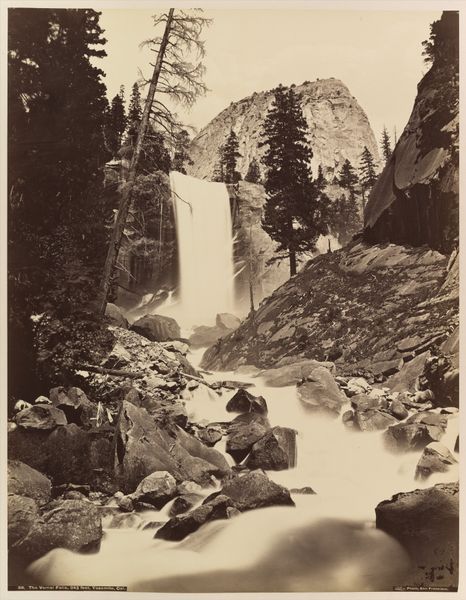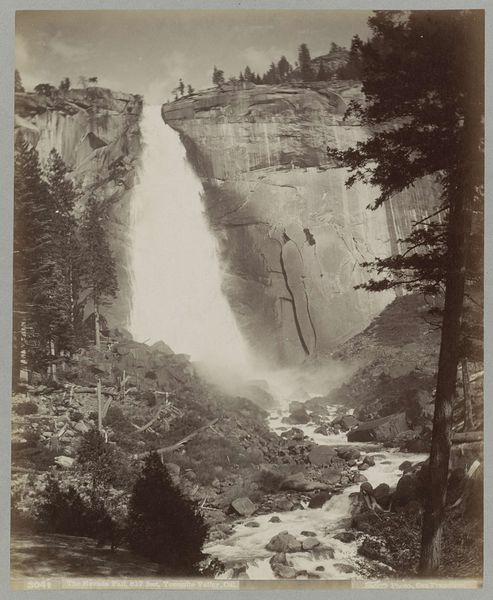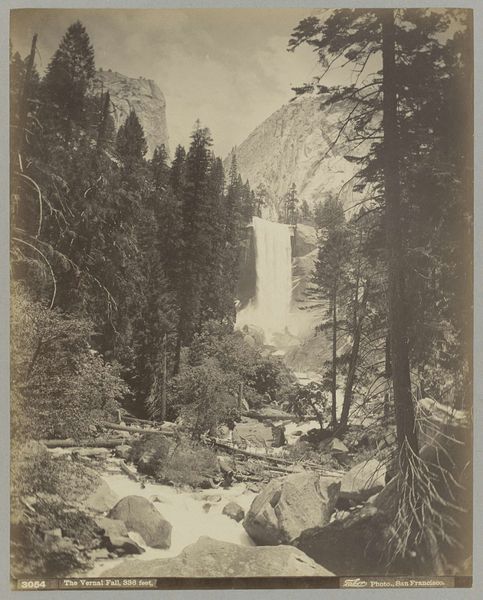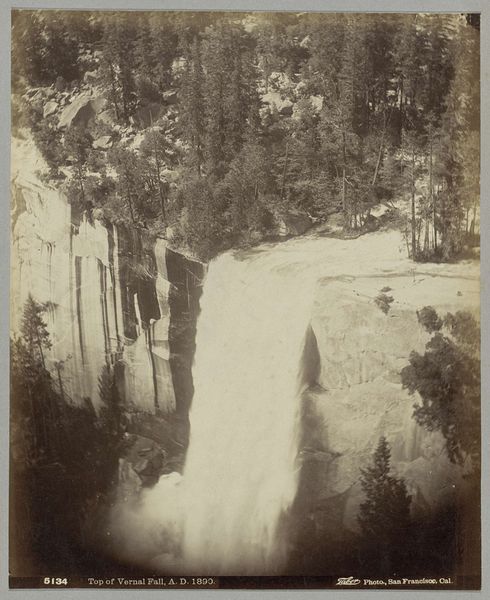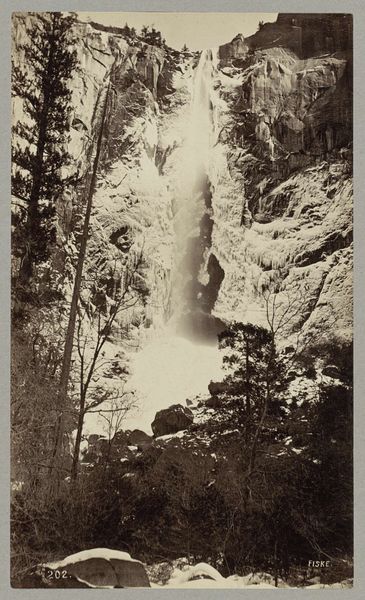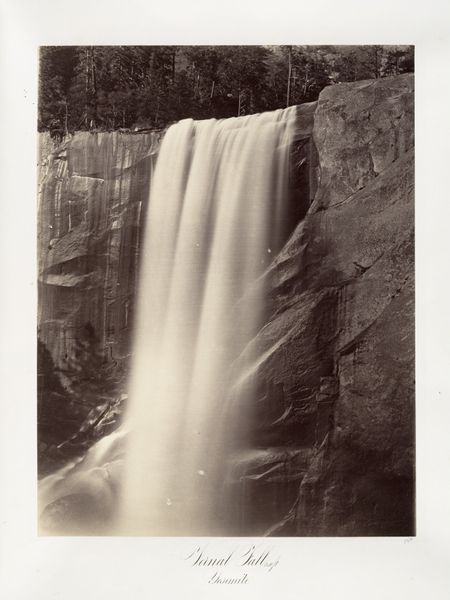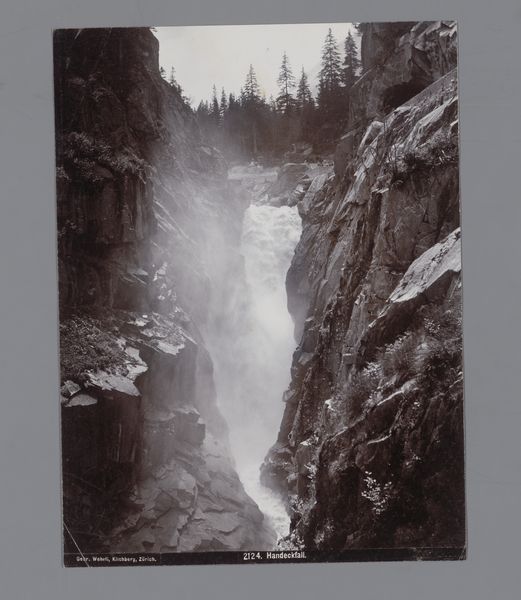
photography
#
landscape
#
waterfall
#
nature
#
photography
#
mountain
#
hudson-river-school
#
water
#
realism
Dimensions: Image: 33.6 × 26.7 cm (13 1/4 × 10 1/2 in.) Sheet: 42.3 × 33 cm (16 5/8 × 13 in.)
Copyright: Public Domain
Carleton Watkins made this photograph of Nevada Fall in Yosemite using the wet plate collodion process, a popular method in the mid-19th century. Watkins’s image participates in the 19th-century romanticization of the American West, fueled by movements like Manifest Destiny and the expansion of the railroad. These large-format landscape photographs, while seemingly objective, played a crucial role in shaping public perception and, importantly, in the designation of Yosemite as a national park in 1864. Watkins's photographs—exhibited in galleries and world fairs—became powerful tools in promoting tourism and westward expansion, obscuring the displacement and dispossession of Native American populations. This is a politics of imagery we can trace through government documents and promotional materials of the time. As historians, we can investigate the complex interplay between artistic representation, environmental policy, and social transformation, constantly questioning whose perspectives are privileged and whose are marginalized in the narratives we construct about the past.
Comments
No comments
Be the first to comment and join the conversation on the ultimate creative platform.
